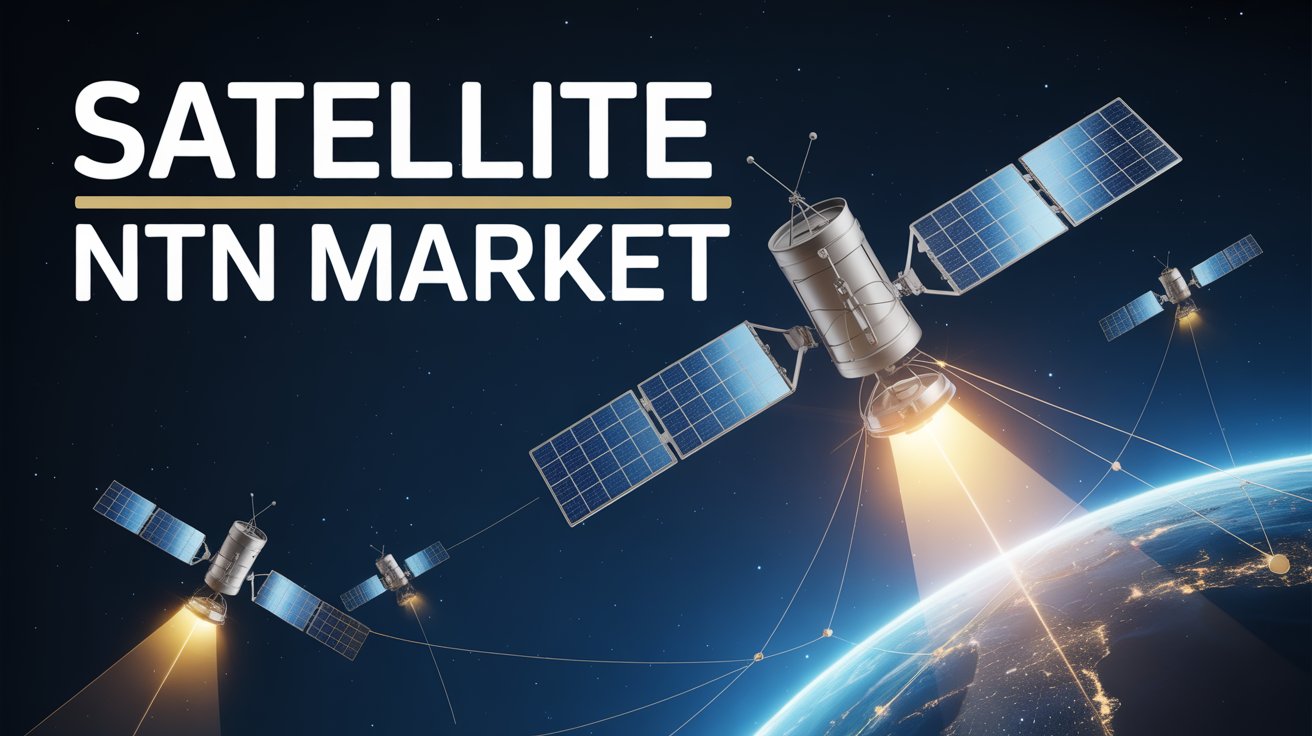The satellite NTN (non-terrestrial network) market is undergoing one of the most significant transformation cycles in the global communications ecosystem. Valued at USD 0.56 billion in 2025, the market is projected to ascend rapidly to USD 2.79 billion by 2030, reflecting a striking CAGR of 38.0%. This exceptional growth trajectory is not merely the result of increasing demand for communication in remote regions; it is rooted in a technological fusion that is redefining what global connectivity means. Satellite NTN—once dependent on high-altitude, latency-heavy geostationary systems—is evolving into a low-latency, high-bandwidth, 5G-enabled network layer capable of supporting the next generation of digital applications.

Download PDF Brochure @ https://www.marketsandmarkets.com/pdfdownloadNew.asp?id=185084281
What elevates this market from conventional satellite communications is its integration with advanced 5G infrastructure, enabling seamless coverage for consumers and industries that have long been underserved by terrestrial networks. As Low Earth Orbit (LEO) constellations expand, latency drops to levels comparable to terrestrial broadband; this shift allows bandwidth-intensive tasks such as real-time video conferencing and cloud-based gaming to occur even in remote, mobile, or underserved areas. Paired with improvements in satellite hardware—lightweight antennas, electronically steerable arrays, compact terminals—the NTN landscape is becoming both more accessible and more capable.
A parallel revolution in launch economics has accelerated this momentum. Reusable rockets have drastically lowered the cost of deploying LEO constellations, making once-impractical mega-constellations now commercially viable. The result is an environment where millions of interconnected devices, vehicles, and sensors can rely on always-on global coverage. This transition is contributing to advancements in autonomous mobility, precision agriculture, resilient military communication, and emergency response networks. As governments and regulatory agencies continue to standardize spectrum allocation and orbital management, satellite NTN is positioned to expand beyond its traditional niches into mainstream connectivity infrastructure.
mMTC Emerges as the Fastest-Growing Application Segment
Within this rapidly evolving landscape, mMTC (Massive Machine-Type Communications) stands out as the fastest-growing application segment through the forecast period. The world is becoming increasingly dependent on billions of IoT devices—environmental sensors, industrial assets, agricultural monitors, logistics trackers, utilities infrastructure, and more. Yet many of these devices exist far from urban coverage zones, creating persistent connectivity gaps. Satellite NTN closes this gap, delivering wide-area, low-power communication that can reach remote and mobile endpoints where terrestrial networks cannot stretch.
The low latency offered by LEO constellations allows IoT devices to exchange near-real-time data—crucial for monitoring pipelines, optimizing crop cycles, or managing supply chains. In maritime shipping, transportation fleets, and offshore energy platforms, satellite NTN becomes a foundational layer of operational efficiency. Its ability to scale to millions of simultaneous connections is vital for the emerging global IoT architecture.
Compounding this demand is the rapid development of small, efficient satellite terminals designed specifically for IoT devices requiring minimal power and bandwidth. The convergence of compact hardware, affordable service models, and universal coverage positions mMTC not merely as an application segment, but as a powerful catalyst accelerating the overall expansion of the satellite NTN market.
L-Band Leads the Market with Its Reliability and Ubiquity
From a frequency standpoint, the L-band segment is projected to dominate the satellite NTN market due to its unparalleled signal performance under diverse environmental conditions. Unlike higher-frequency bands such as Ka or Ku, L-band signals can penetrate atmospheric disturbances, dense vegetation, and urban structures with far greater reliability. This resilience is essential for mission-critical applications including maritime navigation, aviation communication, and emergency response systems.
L-band technology also enables simple antenna architectures that reduce hardware costs and facilitate widespread deployment in IoT and mMTC applications. Its robustness during adverse weather—where higher bands may struggle—ensures continuous service availability, a factor that resonates strongly with industries that require constant connectivity. With existing infrastructure, established regulatory frameworks, and historically strong adoption in global positioning and safety services, L-band maintains a competitive edge that translates into its projected leadership during the forecast period.
North America Takes the Lead in Satellite NTN Expansion
North America emerges as the dominant regional market, propelled by its advanced technological landscape and strong regulatory support. The United States, in particular, is driving the momentum with large-scale LEO satellite deployments from major players such as SpaceX’s Starlink and Amazon’s Project Kuiper. These initiatives are complemented by favorable Federal Communications Commission (FCC) policies that streamline licensing and facilitate spectrum authorization for NTN services.
The region also benefits from deep integration between 5G terrestrial networks and satellite systems, promoting hybrid connectivity architectures that unify mobile broadband, IoT networks, and emergency communications. Investments from both government and private sectors continue to accelerate innovation in satellite components, manufacturing, launch vehicles, and ground infrastructure. This synergy of innovation, policy support, and market readiness positions North America as the global frontrunner during the forecast period.
Competitive Landscape: Key Players Shaping the Future of Global Connectivity
The competitive ecosystem of the satellite NTN market includes established aerospace manufacturers, satellite technology pioneers, and semiconductor innovators. Companies such as Airbus (Netherlands), Thales Alenia Space (France), Kongsberg (Norway), Analog Devices, Inc. (US), and NEC Corporation (Japan) hold prominent positions due to their extensive technical expertise and global distribution capabilities across North America, Europe, and Asia Pacific.
These players are pursuing aggressive strategies—collaborations, constellation expansions, cutting-edge terminal technologies, and strategic investments—to reinforce their foothold in an increasingly dynamic market. With the rise of LEO constellations, 5G-satellite integration, and IoT-driven demand, the competitive rivalry is expected to intensify further.
Ask for Sample Report @ https://www.marketsandmarkets.com/requestsampleNew.asp?id=185084281
Future Outlook: Satellite NTN Becomes the Pillar of Global Connectivity
What once began as a supplementary communication layer is rapidly evolving into a robust, indispensable component of the global telecom infrastructure. With transformative improvements in satellite technology, a surge in LEO deployments, and a world shifting toward IoT-driven industries, satellite NTN is poised for exponential growth. From empowering remote communities to enabling autonomous mobility and precision agriculture, NTN capabilities are reshaping how the world communicates and operates.
